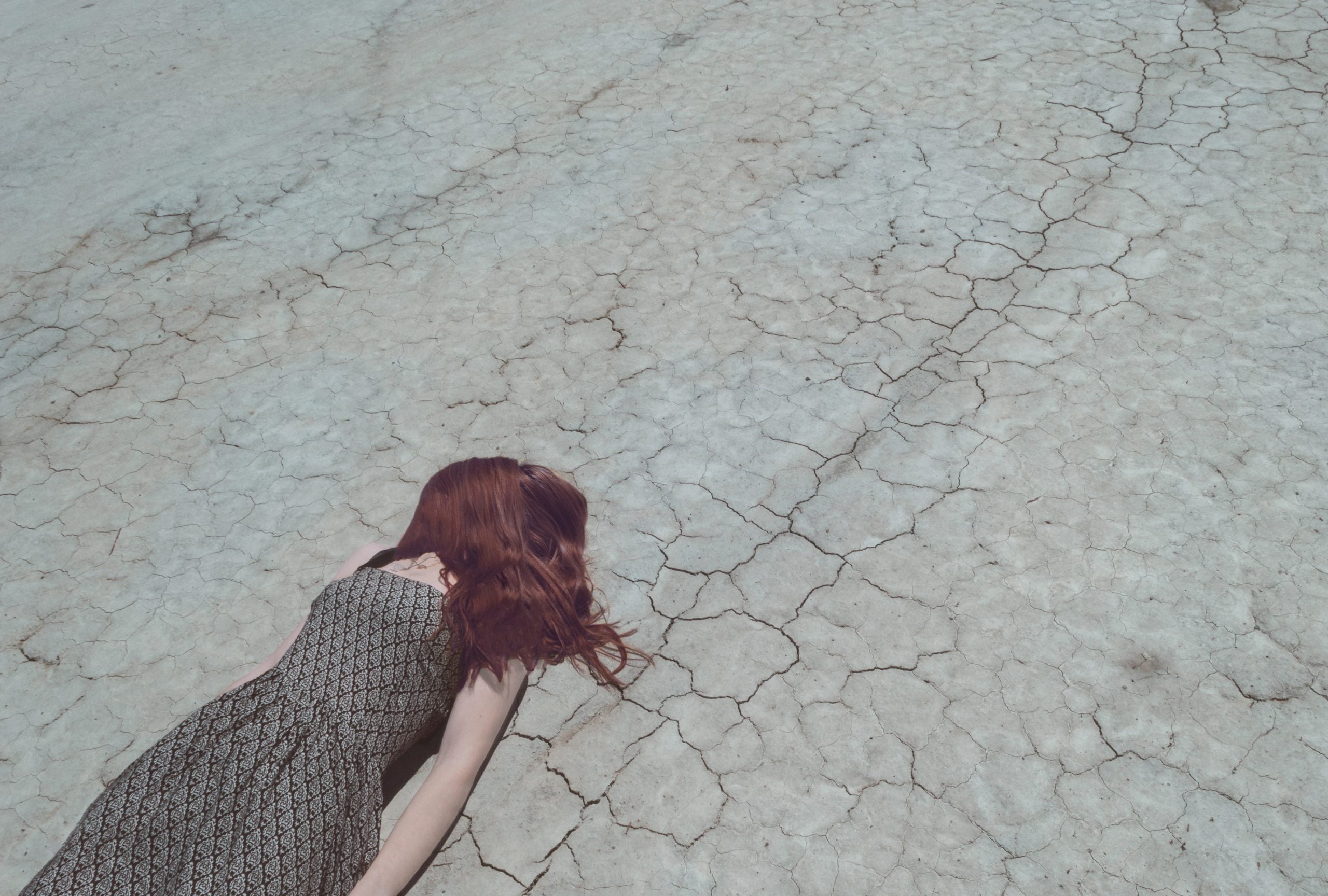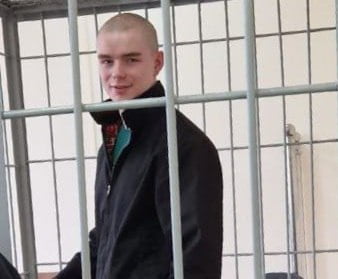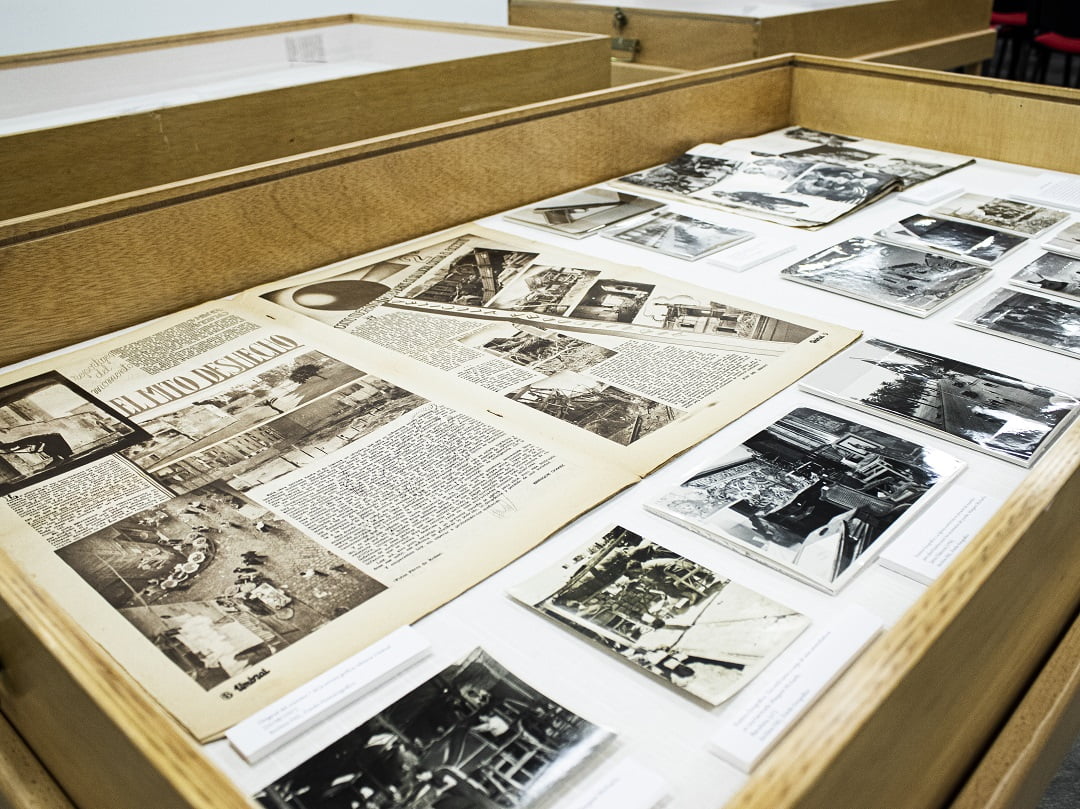Following the election of Argentina’s far-right president, Javier Milei, we contacted the organisers of the Buenos Aires anarchist bookfair with our questions about the situation. Here is a response sent by one of the comrades.
Hello! First, thank you for your interest and the invitation to participate in a conversation with the historic newspaper Freedom. I belong to the anarchist publishing house “Expandiendo la Revuelta” from Buenos Aires, which was created in 2019 and is dedicated to investigating and editing new material on anarchist history in the region. “Expandiendo” is one of the publishers with which we organise the Anarchist Bookfair in the city and participate in the “Incendiary Library”. In this sense, it is necessary to clarify that the responses do not represent all of the comrades, but are their perspectives constructed in dialogue with some groups and individuals.
What will the new president mean for people there? Tell us a little about the last one, and what will the difference be? Are people mobilising? What is the organisation like there? Is there a plan of action? Connections between affected groups? Was this result expected?
It is difficult to predict a response. President Javier Milei takes office on December 10, but different demonstrations are already beginning to be organised, especially in sectors that are being strongly questioned, such as the state media and other ministries more linked to the public sector, given the announcement of future cuts and layoffs, assemblies and discussion spaces are already being organised. It is also difficult to think about possible “action plans” because Milei’s victory cannot be seen as an isolated event but as the result of an emptying and institutionalisation of many social struggles of recent years. A clear example is the national unions, reflected mainly by the CGT (General Confederation of Labour), the official centre of unionism that is obscenely bureaucratic, repressive and a defender of Peronist governments. The CGT did not initiate any strike or general strike during the last 4 years while inflation was 140%, and repressed the minority sectors of unionism fighting for wage increases, but held demonstrations to support the Peronist presidential candidate, the Minister of Economy Sergio Massa.
In general, there is a climate of mobilisation, but it is also the result of the first shock due to Milei’s victory. In the coming weeks and months, many sectors will probably make pacts with the government. Our bet, obviously, is on the most radical spaces of struggle where we can promote a proposal that is not simply “resistance” but a deep criticism of the capitalist system and the State.
Regarding the result, at first, it was not expected; many expected the liberal right to win, but from more ‘moderate’ sectors within Mauricio Macri’s party, after the first elections (in Argentina, there are 2 or 3 runoffs to decide the president, depending on the percentages). Milei’s surprise meant a bucket of cold water for a significant part of the population and a dose of reality for those who supported and justified the previous government.
How successful have people been in building resilient mutual aid over the last 22+ years? What’s worked, what hasn’t worked? Also, what does the fall of Peronism, the old left, mean – opportunities or just a vacuum?
I think both questions go hand in hand, and it is necessary to clarify that Peronism is not a left-wing movement or party, as we read in different places. This is important to make the national context deeper and more complex. I am not saying this as a defence of “the left” (with whom we also have opposing positions) but to understand the political context in Argentina. The institutional left in Argentina is represented by the “Left Front,” which goes to elections every year and achieves very low percentages (3%) but has some deputies and a lot of visibility and propaganda for its main candidates.
Peronism is a structure that brings together different parties, currently represented mainly by “Unión por la patria”, where different groups and alliances linked to Popular Nationalism come together (obviously detached from the ideas of General Perón). Although, at a certain point, Peronism could have had a more “progressive” image, this has to be seen as part of electoral and political manoeuvres that tend to adapt to the national situation (and not as an ideological position, Peronists do not identify themselves as ‘left’ either). For example, the government of Carlos Menem (1990-2000) was explicitly Peronist and neoliberal and had the support of all the governors of the different provinces (including Nestor and Cristina Kirchner). Still, after the revolts of 2001 and the negative image that Menem had, Peronism began a “critical” campaign with neoliberalism and more linked to Latin Americanism and alliances with more progressive governments (Lula da Silva, Chavez, Mujica). In parallel, while talking about “national sovereignty”, they promoted projects that brought companies such as Monsanto, Barrick Gold, Chevron, etc., to the country dedicated to extractivism and environmental destruction.
One of the difficulties of the social struggles against the Peronist-Kirchnerist governments from 2003 to 2015 had to do with the fact that many of the movements that promoted the mobilisation in 2001, such as the piqueteros and the neighbourhood assemblies, were institutionalised and detached from their rebellious factor. The most combative sectors were strongly repressed, seeking to isolate them from the different social movements. The “left” image that Kirchnerism knew how to create was precisely based on the repression of the extra-parliamentary left and the autonomous and anarchist movements.
I do not believe that the ‘fall’ of Peronism represents an opportunity or a vacuum in itself; they will simply seek to accommodate themselves electorally and promote some mobilisation as long as it is politically profitable. At the same time, it is true that in the face of an explicitly far-right government, it is easier to visualise the enemy because, for many years, we faced nationalist propaganda from the government with slogans such as “We are all the State” and accusing those of us who confront the State of “playing into the hands of the right”. In this sense, all mobilisation against past governments was accused of being “reactionary”. Now, the challenge is how to prevent the anger and need for action in many sectors that see Milei and his entire government as enemies from being recuperated again by the political parties, for example, in 2003 and 2015.
Javier Milei can seem like a rehash of his neoliberal and presidential predecessor, Mauricio Macri, who reopened the door to US vulture capitalists and instituted a new wave of Shock Therapy policies that brought about a 36% poverty rate and inflation as high as 40%. Between 2018 and 20, the IMF granted Macri the most significant loans in its history: $100bn ($56bn in 2018 and $44bn in 2020). Thus, between 2012-21, Argentina had the largest increase in public debt: 40.5 percentage points of GDP. When Fernandez assumed office in 2019, the country’s debt was more than $320bn, which by November 2023 had reached $420bn. So is it right that Fernández inherited the IMF burden from Macri, and it hindered his ability to make good on his campaign pledges? His centre-left Peronist predecessors had managed to escape Argentina’s debts in the past by declaring them as “odious” – which is something that Mandela and the ANC were criticised for failing to do when they took office. His centre-left successor Fernández had pledged to tackle Argentina’s social crisis but failed to make sufficient headway, likely creating the grounds for Milei’s Trump-style opportunism to gain traction. How can we stop people calling him an “anarcho-capitalist”?
The issue of IMF debt has affected the Argentine economy for many years, since the 1950s. To summarise, we can see a clear line in the 1976-1983 dictatorship that took on large debts and began a massive privatisation plan. This line was continued and deepened in the 1990s with the neoliberal decade, and in the face of the revolts of 2001 and a different national and regional context, a path of regional economic alliances began, and the government agreed to pay a large part of the debt between 2006 and 2009. The Macri government reopened the debt under different justifications, more or less real, such as that Argentina was in a large deficit and that the economic bubble created between 2006 and 2015 was unsustainable. But as always happens, the new IMF debt was not aimed at recovering the country financially but rather at deepening the looting and exploitation. There are many open trials for corruption because a large part of the funds disappeared into foreign accounts.
The government of Alberto Fernández, with a Peronist tendency (2019-2023), used this debt as a justification throughout its mandate. All economic responsibility was separated from the debt taken by Macri, but it decided to agree with the IMF and pay the debt. For many that were seen as “fraudulent”, there were different demonstrations and demands to break ties with the IMF and not pay, but the government repressed these protests and imprisoned several protesters for attacking Congress on the day of the agreement.
In this sense, for us, the IMF debt continues to be a logic of the parties in power, where some take the debt, the others pay it, and justify their mandate by criticising the previous government. In the middle is our exploited class, the one that ends up paying and suffering from cuts and a life that is increasingly difficult to sustain.
Regarding Milei and his differences or similarities with Macri, there was a break with respect to the last part of the elections that showed that many of Milei’s slogans were populist fictions; his main motto at the beginning was “End the political caste” and “A different Argentina is impossible with the same old people”, seeking to show themselves as political outsiders. This position was vehemently maintained in the media, saying that both Massa and Macri and their party were a mafia, puppets, and even ‘socialists’, also proposing dollarisation and sharp cuts. But in the last month, to win the elections, he allied himself with Macri and his candidate Patricia Bullrich (who had been a ‘socialist Peronist’ in the 70s), denying the accusations he had made a few weeks ago and currently giving positions in many of the ministries to Macri’s party (Together for Change). Bullrich will once again be minister of security, and Luis Caputo, the same one who took on the IMF debt in 2016, will once again be minister of economy.
These examples demonstrate that Milei’s populist rhetoric was, as in all parties, a caricature for coming to power; part of the cuts he proposed, and even dollarisation, are beginning to be discussed as long-term plans that would take many years, even decades, to complete. This is also highly questioned by the militants of “Freedom Advances” (Milei) since their economic plans began to be modified even without having taken over the government.
Although during the electoral campaign, Milei was openly presented as a fascist by the opposition sectors, it is necessary to separate the propaganda from the Argentine political reality. Within La Libertad Avanza (LLA), there are far-right sectors; that is undeniable; its vice president is directly connected with the last military dictatorship and openly justifies the repression against the revolutionary movements in the 70s, but there is also a faction of liberals who come from sectors of both Macri and Massa (in addition to being the candidate of Unión por la Patria, the Peronist candidate has his own political party called “Frente Renovador” with a solid repressive and conservative character). The debate is about how much future cuts and capital flight can be reconciled with sustaining the social order. If Milei becomes a danger to the political-economic order and its businesses, there is no doubt that the same politicians who support him today will ask for his resignation in a few years.
This is where the factor of resistance movements comes in. Broadly speaking, an important autonomous Mapuche resistance and different environmental assemblies maintain their positions against all governments and against NGOs that seek to commercialise the struggles. There is also an anarchist and, more broadly, anti-authoritarian movement, which, although a minority, has different tools to expand the conflict and encourage revolt. Obviously we are talking about small sectors, but in a context where many more people are mobilised by state progress in its liberal format, they can be influential. Furthermore, the feminist movement, which, after the legalisation of abortion (December 2020), entered a cycle of institutionalisation and alienated many people, is once again mobilised as a factor of social questioning.
We must not fail to mention that repression is also intense and will surely increase; Argentina has one of the highest number of police officers per 100,000 inhabitants (803), while in the United States or Canada, for example, it does not reach 200. This process of tightening social control and increasing police on the streets occurred under all governments from 2002 to the present.
Regarding the “anarcho-capitalist” factor, some debates exist around Milei’s use of iconic rebellious phrases for his political campaign. Some seek to enter the theoretical/historical discourse, for example, using the word “libertarian” attributed to its militants. For us, although it is a factor to take into account, we believe that the debate has to go beyond the false dichotomies that the parties in power impose on us. The most dangerous thing about the “anti-state” narrative which is associated with Milei, both by those who support him and by those who say they are against him, is that we enter into a false dilemma regarding state management, reaching the absurdity of affirming that a president is against the State or that a “resistance” against the government has to be aimed at ensuring rights and state institutions. This point is central to going through and responding to the coming years of discussions and social upheaval, understanding that neoliberal management of the State and populist Nationalism are not two opposing positions but rather two sides of the same coin with which Capital alternates its governance.
What tools do people have to defend themselves from shock therapy and pressure from corporations and the government? And can social movements respond if the new guy does a Liz Truss and is mugged by the markets?
I think the tools are more or less the same as many years ago (that can be a problem, too): popular mobilisation, strikes, solidarity, and confrontation. Our concerns at present are how to act in a context of strongly institutionalised mobilisation. Many social leaders are representatives of organisations and political parties that only see the possibility of conflict as a way to sustain this social order. At this point, some spontaneous moments can unite us in demonstrations, but they are also the first to criminalise those who confront the police or wear hoods when the conflict does not serve them politically.
This was very evident in 2017; on August 1, our anarchist colleague Santiago Maldonado disappeared while he was blocking a route in the south of the country next to a Mapuche community in Cushamen. The gendarmerie (national militarised police) kidnapped him, and his body was only found 2 months later. During those months, many anarchists, rebels and anti-authoritarians took to the streets, with many actions, propaganda and dissemination, and many political parties and organisations used the murder of Santiago to carry out a political campaign (in 2017, there were congressional elections) and “dirty” the image of Macri and Bullrich relating them to the disappearances during the military dictatorship. In that context, the possibility of a revolt by our comrades (something that was possible at first) was strongly repressed, not only by the police but by Peronism and the institutional left; they were the ones who denied the anarchist identity of Santiago and began a media campaign accusing his comrades of being “infiltrators,” a logic that is used both here and in Chile and Brazil to criminalise anarchists and accuse them of being police officers or “agitators.” Today, Santiago’s image is known throughout the country, but his anarchist memory is often invisible.
These experiences taught us that, although we are in the conflict, organising ourselves, generating relationships, and opening more spaces for debate and discussion, we also have to be aware and attentive to political manoeuvring that changes shape as needed and not fall into the game of “united fronts” with representatives of the State and the national bourgeoisie.
Our convictions remain firm to promote the revolutionary struggle for the destruction of the State and Capital without falling into reformist or nationalist logic while refusing to enclose ourselves in half-truths and pamphlet slogans.
~ Interviewed by Uri Gordon
Image: Matias Jacobi / Unsplash / March 24, 2017 / This photo was taken during the National Day of Memory for Truth and Justice march in Buenos Aires, Argentina. On this day, people in Argentina commemorate the anniversary of the civil-ecclesiastical-military coup of the year 1976, where the dead and missing civilians are remembered.








